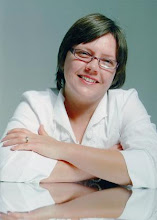“A neat workbench is a symptom of a sick mind.” ~ unknown
Day Two
Santa Fe, New Mexico
The second day was very frustrating for me at the Ryder Studio. It was frustrating in the sense that I felt like I was back in kindergarten, learning new things. I thought I already knew how to draw. Wrong! The highlight of the day was Anthony Ryder’s demonstration.
Anthony Ryder says that you want to capture the likeness of the model. Likeness is found in very fine measurement. Ask yourself, “Does it feel right?” We heard this question many times throughout the 10 days.
Recognition of a person is known from a distance. Look to the larger aspects of the frame, the body language. In a portrait, fine tune the big shapes to capture the person.
Order of the block-in
- Big outside shape – don’t try to get the outside shape perfect – adjustments come later.
- Features.
- Reconcile the two.
Nose
The nose goes up into the forehead and below the nose. Measure the length of under the nose to the top of the lip.
Neck
Neck muscles attach to underneath the cranium to the spine and to the shoulder. Think of the neckline of the shirt as a root ball of a tree.
Lips
The mid-line shadow twists like a ribbon.
Shadows are very important to the facial features.
The lips and eyes don’t have an outside shape. Draw the light and shadow and the shapes will appear!
3-D forms have a horizon.
Have you ever heard the expression, “Pass the hammer, there’s a fly on the baby?” It was said so we would not draw solid outlines around the shapes.
Did you know that drawings have a very sensitive attitude? Tune your perception to the model.
Draw the configuration of light. When placing or tracking the shadow edge, place the soft line at the terminator or form shadow edge. The form shadow edge (a.k.a. the terminator) is where the form turns away so much that it turns out of the light altogether and drops into shadow. This definition is found on page 98 of Anthony Ryder’s book The Artist's Complete Guide to Figure Drawing.
Shading
When beginning to shade, map the areas first and gradually build up the shading. Value change of the wash is very dependent on the light source. (Value bands – related to the shape of an object.)
Hair
Draw the hair with large shadow shapes.
Any linear form in the body will be translated by other linear lines running through it.
Anthony Ryder’s wife, Celeste, helped us each day. She said we need to make friends with the medium or process. I have to agree with her.



